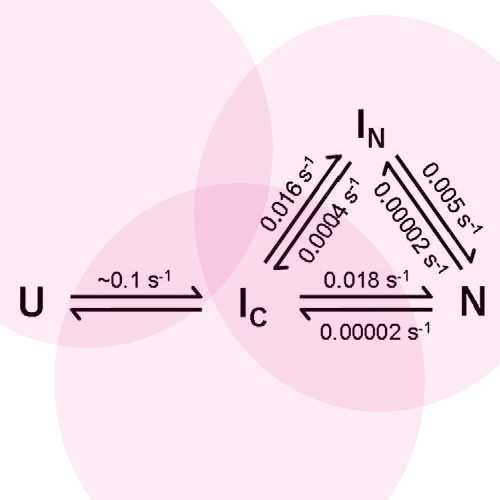The Folding Pathway of the Antibody VL Domain
09-Oct-2009
J. Mol. Biol., 2009, 392(5), 1326-1338, doi:10.1016/j.jmb.2009.07.075 published on 09.10.2009
J. Mol. Biol., online article
J. Mol. Biol., online article
Antibodies are modular proteins consisting of domains that exhibit a β-sandwich structure, the so-called immunoglobulin fold. Despite structural similarity, differences in folding and stability exist between different domains. In particular, the variable domain of the light chain VL is unusual as it is associated with misfolding diseases, including the pathologic assembly of the protein into fibrillar structures. Here, we have analysed the folding pathway of a VL domain with a view to determine features that may influence the relationship between productive folding and fibril formation. The VL domain from MAK33 (murine monoclonal antibody of the subtype κ/IgG1) has not previously been associated with fibrillisation but is shown here to be capable of forming fibrils. The folding pathway of this VL domain is complex, involving two intermediates in different pathways. An obligatory early molten globule-like intermediate with secondary structure but only loose tertiary interactions is inferred. The native state can then be formed directly from this intermediate in a phase that can be accelerated by the addition of prolyl isomerases. However, an alternative pathway involving a second, more native-like intermediate is also significantly populated. Thus, the protein can reach the native state via two distinct folding pathways. Comparisons to the folding pathways of other antibody domains reveal similarities in the folding pathways; however, in detail, the folding of the VL domain is striking, with two intermediates populated on different branches of the folding pathway, one of which could provide an entry point for molecules diverted into the amyloid pathway.











